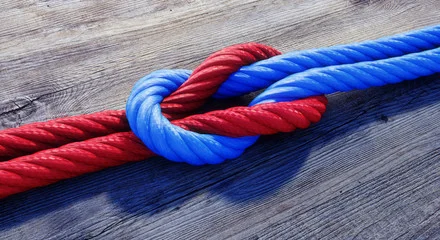Practicing New Beliefs About Certainty
This article explores uncertainty and certainty and how beliefs can move you to certainty. A number of questions are listed which, when you ask yourself them, will forever keep you in uncertainty. An example of a few beliefs is embedded in a short story.
(Note) This article was originally published on April 13, 2013, at Benninghofen Company but has been updated and re-published here.
Background
Certainty isn’t a pristine reality, like perfection which is usually associated with a deity: mortals seem to struggle with absolutes. For this article, we will accept degrees of certainty as progress toward forwarding movement in our on-purpose personal and business lives.
Image Background
We all get hoodwinked at times thinking that what we are reading is the truth. Yes? No? Maybe?
In this photo image close by, a professional is reviewing a printed report that gives her information about her business. Is it correct, true and accurate? We suspect not, since there is usually at least a 5% to 15% error in most reporting.
Aside: When it comes to current media outlets (e.g. opinion journalism/fake news) the accuracy rate can far exceed business reporting error rates - in the 95% to 100% range.
If it’s printed, it is right - yes?
We will describe what uncertainty looks like first and it’s related stoppages because many of us know this better, sometimes experiencing it with much more frequency and intensity.
Background About Uncertainty
We got lost in uncertainty in our past until we used a simple and easy tool to gauge things.
We now practice CERTAINTY and have built beliefs around it that help us stay there.
We have learned that both certainty and uncertainty can be uncovered by questioning.
From our perspective and experiences, uncertainty seems to be more active when your beliefs are not clearly defined or understood: some consider these inhibiting beliefs – we don’t disagree.
Important Questions to Ask Yourself
Here are some questions which will forever keep you in uncertainty:
Do I have the ability to accomplish difficult objectives, goals, projects, or tasks?
What has me stress about my physical or emotional health, relationships, or happiness?
What’s keeping me from my commitments for all kinds of things?
Can I sustain long-term financial stability and provide for my family?
Can I fulfill my ambitions and dreams to my satisfaction?
Will I get the things I love in my life?
These questions tend to stop people in their forward movements and sometimes question the direction they are headed: this will produce uncertainty and stoppage.
Have you been with uncertainty recently? Of course you have! We invite you to look at the picture close by because you’ll likely connect at some level.
What Has Uncertainty Prevail
In our world today, many of these questions (i.e. similar to the ones already listed above) come present more so than the ones which could produce certainty.
There are reasons for this. We believe mainly because of the heavy consistent marketing and selling influencers, all based upon varying forms of questioning, which are ever present in many ways, especially in media: television, radio, newspapers, magazines, etc.
This is what uncertainty can look like and how confusing it can be for someone…
We are literally bombarded across all devices whether smartphones, the web – you name it. We suggest you disregard those questions and create your own questions that you can answer through your choices and actions: yet it all begins with you defining a belief.
Beliefs Help Gain Certainty
We will not make this a discussion about inductive logic, the philosophy of probability, or mathematics. However, this blog is more along the lines about our beliefs: whether or not we can capture some basic insights about how to receive accuracy in our selecting, choosing, and getting our defined results.
Fact or Fiction?
Consequently and especially for those of you with keen scientific and analytical minds, this is not a facts-based journey – nor do we suggest this in any way. We are offering you a simple, effective method of searching for some new ideas – to allow for different perspectives. It could also be a way toward developing your own truths that could and will serve you well.
For instance, you could define a belief that has you gaining competency or confidence in a particular subject, with you making effective choices for yourself taking specific actions, and then measuring your results. When you attain the result, you have received your truth about it – you have also gained faith in your belief the more you exercise the belief. We call this evidence-based experiential belief and faith.
Remember that when we talk about truths, we are suggesting some truths, not the truth. You pick and choose when and how you would use your truths.
Lies or Truth? How hard to decide?
Short Story
Here’s a short story we will call “John’s Christmas Present” about a few simple beliefs . John is a salesman who had worked for a few similar companies, prior to the one he was employed with now. He had been very successful in his other companies, but was struggling in the new one. His manager invited him for a Christmas drink. The manager suggested that he was very worried about John’s future with the company. He asked John to think over the holidays about what he could do to change things.
John was stunned at first, called a few friends to get some ideas about what he could do. The answer back was that John needed to change only two things: 1) his attitude; and 2) his behaviors. He thought it over and decided he could do both
Lies or Truth? Hard to decide?
He started back after the holidays, shared his plan with his manager, asked for help along the way, then started doing things differently. He set beliefs in place that: 1) allowed him to make mistakes; 2) that he could learn from them; 3) that John could always ask for help to improve, and finally, 4) that he could be the best salesman in his company. John succeeded beyond his wildest dreams because he believed that he could do what was asked by his friends – he went about it by acting accordingly.
The Aspect of Certainty
So, here is how certainty plays a part in this story. While John was able to redefine four new beliefs about what was possible for himself: he was undertaking change. He knew that he would have to measure something if a change was to going to take place. John decided to measure the beliefs John created for himself and the associated actions that he was taking toward the new beliefs. It started slowly at first and gained momentum as he began to see results.
Try this for yourself and begin with measuring your beliefs and the associated actions that you take. Are they working? If your answer comes back less than eight on the CAM Awareness Scale, you will need to look at what needs tweaking.





